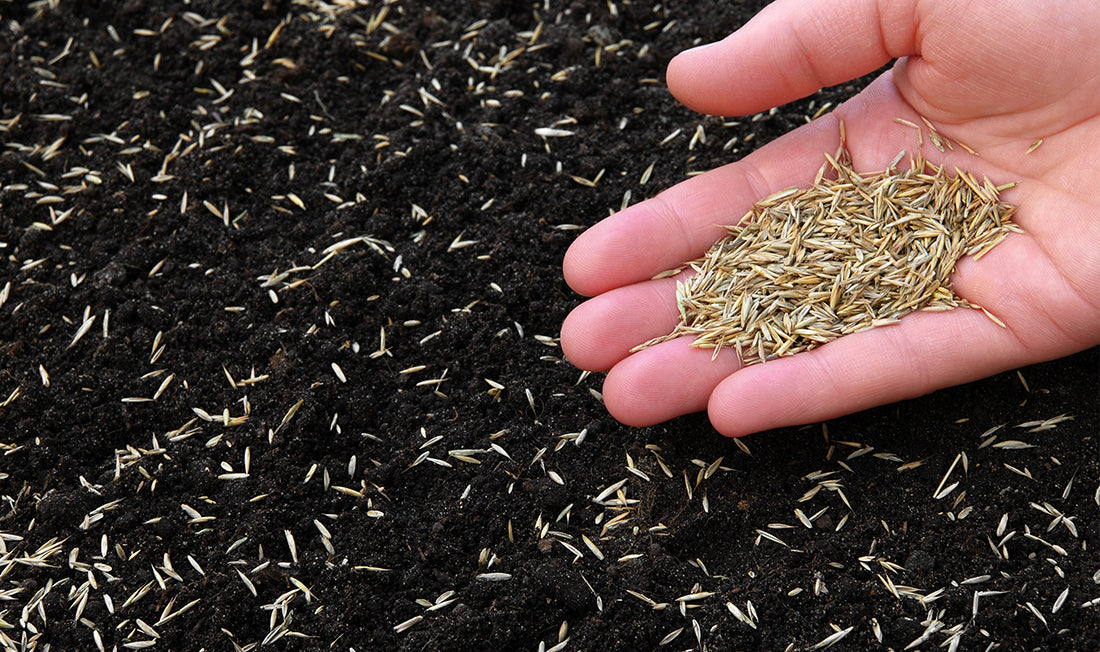As a homeowner, you’re probably well aware of the importance of maintaining your lawn. Whether you’re looking to grow a new lawn or repair an existing one, using the right type of grass seed is crucial. However, with so many options on the market and with each label containing its own set of confusing jargon, it can be overwhelming to navigate through the process. In this post, we’ll be discussing how to read a grass seed label and why understanding it is important for the health of your lawn.

How to Pick High Quality Seed
Species - This is important information; it tells you what species of grass are contained in the bag (e.g., tall fescue, bermudagrass). It’s possible to get seed with one species in the bag. It’s also possible to buy seed as a mixture of species.
Cultivar (Variety) - This provides information about the specific cultivar of each species of grass in the bag. Within species, there is a wide variety of cultivars, each with their own strengths and weaknesses. It’s a good idea to purchase seed with more than one variety in the bag, This allows for each different cultivar to proliferate in areas where it grows best, protecting against mass failure if one cultivar is not as well suited as others for where they were planted.
Germination Rate - This number will ideally be 80% or higher. Each cultivar in the bag will have its own germination rate. A higher percentage corresponds to a better chance of getting great germination and getting you on your way to a healthy lawn or a fixed-up bare spot.
Pure Seed - This is the percent by weight of each specific cultivar/species in the bag. We will discuss the importance of this in the following paragraphs
Other Crop Seed - This is other seed that makes up less than 5% of the total weight of the bag.
Inert Matter - These materials are things in the bag other than seed. This can typically be a seed coating of fertilizer or mulch for moisture retention. If it’s just seed that you’re after, make sure this is as low as possible.
Weed Seed - This is the percentage of weed seed in the bag.
Noxious Weed - Noxious weeds are regulated by state. Ideally, this will be zero.
Lot Number - This is an identifier for specific seed lots.
Test Date - The date that the seed was tested. Make sure this is as recent as possible for the best-performing seed.
Sell By Date - Varies by state and corresponds to seed freshness.
Name and Address - Location of the seed company

What to Avoid When Purchasing Grass Seed
Seeding rates are usually given in pounds of pure live seed per 1000 sq ft. or per acre. In order to determine the amount of pure live seed in your bag, multiply the germination percentage by the weight of pure seed. For example..if a 50 lb bag contains 49 lbs of seed with a germination percentage of 80%, then you have 49 lbs * 0.80% = 39.2 lbs of pure live seed.
Avoid buying bags of seed that contain noxious weed seed and bags that do not specify a specific cultivar (variety) of grass. These bags of seed are typically cheap, lower-quality grass seed. Remember, you’ll get what you pay for when it comes to buying grass seed.
When it comes to growing a healthy lawn, choosing the right type of grass seed is crucial. However, with so many options on the market and with each label containing confusing information, it can be difficult to make an informed choice. By understanding how to read a grass seed label, analyzing its contents, and paying attention to seed traits, you’ll be well on your way to growing a healthy and vibrant yard. Remember, it’s always important to seek out professional advice when choosing the right grass seed for your yard to ensure long-lasting success. Contact us today for a free seeding guide.









